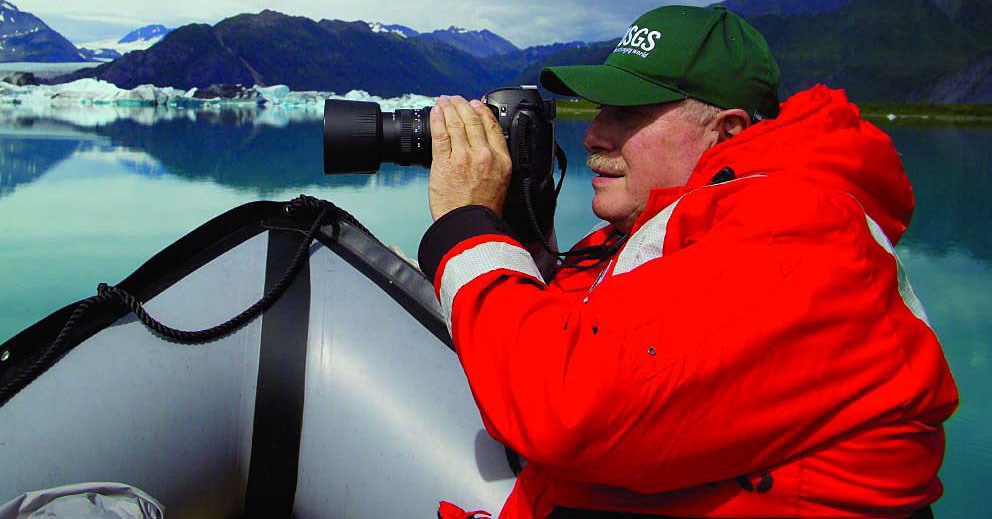Part of a series of articles titled The Legacy of ANILCA.
Article
Science in Wilderness Marine Reserves
By John Quinley

National Park Service photograph by Jim Pfeiffenberger
What research was funded, how three decades of inquiry were conducted, and where science made an impact in park management is a less tidy story—one that was often influenced by forces outside the realm of science including the federal courts, legislation, Congress, and administrative policy.
Three areas of inquiry over the last 25 years saw a significant amount of field work, research, and exploration, each for unique reasons tied to the 1980 law. Both subsistence research and mining research have been discussed earlier in this issue, however, one aspect remains—research in wilderness areas. Resource protection was at the heart of this third issue, and it launched considerable research, work that continues today.
While continuing to allow for certain traditional uses, ANILCA also established 33 million acres of “Wilderness” in Alaska national parks. As described in the 1964 Wilderness Act, wilderness is …an area of undeveloped federal land retaining its primeval character and influence, without permanent improvements or human habitation, which is protected and managed so as to preserve its natural conditions…with the imprint of man’s work substantially unnoticeable…(Public Law 88-577). Allowable public purposes include recreational, scenic, scientific, educational, conservation, and historical use.
Almost 48,000 acres of the ANILCA wilderness areas were marine waters in Glacier Bay, primarily around the Beardslee Islands and in the relatively narrow East Arm and West Arm in the upper reaches of the bay. In 1999, Congress prohibited commercial fishing in these wilderness waters, establishing one of the nation’s largest marine reserves.
Those decisions, in turn, led to a unique opportunity for studying marine reserves in a high latitude ecosystem. The closures created five protected areas, each of which is adjacent to areas remaining open to commercial fishing. This has provided researchers an opportunity to compare populations of crab, halibut, and other marine life under different management regimes.
In particular, studies led by Jim Taggart of the U.S. Geological Survey and others are looking at the transfer rate of Pacific halibut, tanner crab, and red king crab between the reserves and adjacent areas. The studies are allowing measurements of movement patterns, and helping identify essential habitat, changes in distribution, and migration patterns. Additionally, crab size data from before the commercial fishing closures and after are being compared with initial results showing increasing abundance of large male crabs in the reserve areas. This research is described in more detail in the Winter 2003 issue of Alaska Park Science.
References
Public Law 88-577. 1964
Wilderness Act (16 USC 1131-1136).
Tags
- aniakchak national monument & preserve
- bering land bridge national preserve
- cape krusenstern national monument
- denali national park & preserve
- gates of the arctic national park & preserve
- glacier bay national park & preserve
- katmai national park & preserve
- kenai fjords national park
- kobuk valley national park
- lake clark national park & preserve
- noatak national preserve
- wrangell - st elias national park & preserve
- yukon - charley rivers national preserve
- aps
- alaska park science
- alaska
- anilca
- marine
- wilderness
- ak1
Last updated: October 23, 2021
